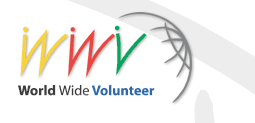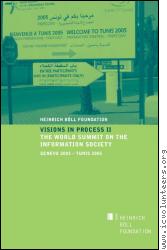A laboratory for new mechanism: Volunteerism as a building block for multi-stakeholder approaches (MSAs)Click to Download visions_in_process_ii.pdf (3.8M) 16 November 2005 © Heinrich Boell Foundation, Visions in Process II, The World Summit on the Information Society, Berlin, Germany IntroductionTo many, the World Summit on the Information Society (WSIS) process has been a laboratory: Its innovative mechanisms hold the potential to serve as effective models to help shape future UN meetings and summits, as well as other processes involving multiple stakeholders. In order to realize this potential, it seems critical to step back and to evaluate the achievements of WSIS, both in terms of its success in attaining its original objectives, and its potential for structural replication elsewhere. While it is premature to draw final conclusions regarding the WSIS process, this article outlines some initial findings on the structure of the meeting and overall success in implementing its recommendations and policies. In the second part of the article, we describe some positive results stemming from the active participation of one specific constituency, the volunteer sector. The volunteer sector first became involved in the process of the WSIS in 2002, at the African Regional Conference in Bamako. Since then, volunteers and volunteer organizations have actively contributed to its preparatory process, the Geneva summit, and the Tunis phase. We conclude that some of the lessons learned in the volunteer sector are particularly relevant to future efforts to build both effective multi-stakeholder relationships and successful partnerships. At the end of this paper, we detail the unique qualifications of volunteers to impact these processes. Contents
Lessons from the volunteer sector, and how volunteers can contribute to the MSABecause volunteers operate to a great extent at the local level and in informal settings, their participation in UN processes as a recognized actor is relatively new. However, I believe the roles played and methods developed by volunteers offer important lessons for those seeking to design and implement effective multi-stakeholder processes. The following paragraphs aim to explain the concepts of volunteerism, and to summarize the methods for utilizing volunteers in the Information Society and how their work fits into a MSA. In general terms, volunteers can be defined as individuals who offer their time, skills and experience to carry out a non-obligatory, non-wage activity for the well-being of their neighbors, community or society as a whole. Volunteering takes many forms, from traditional customs of mutual self-help to community responses in times of crisis and joint efforts for relief and conflict resolution. With the creation of a WSIS Volunteer Family, a range of national and local volunteer organizations got involved in the summit. Volunteers themselves also participated, ensuring the smooth running of many aspects of the summit. The very first step for the Volunteer Family was to define the role of volunteers in the Information Society, in terms of the activities carried out by volunteers and the partners they work with. This was done through:
WSIS participants discovered that volunteer activities held enormous potential to help make the Information Society a reality across the globe. Furthermore, it became clear that, to be most effective, volunteers would have to rely heavily on multi-stakeholder interactions and partnerships. In the Information Society, volunteers have played and continue to play a key role in the creation and development of software applications (open source software, contents development, etc.). In fact, some of the key components of the Information Society are, to a great extent, a product of volunteer effort. Well-known examples include Internet protocols and the World Wide Web itself. Volunteers are also helping to reduce the digital divide, both within and between countries, through human capacity-building and literacy programs. They train people and help them apply specific ICTs to their particular development needs. They also raise awareness about the possibilities of these technologies (e.g. by providing outreach to local users in community telecenters). Furthermore, volunteers can facilitate the production and dissemination of local content, enhancing the cultural and linguistic diversity of ICTs. Volunteers can help train ICT trainers, but also get training themselves by exchanging knowledge. In the context of a developing country, this increases the critical mass of qualified ICT specialists available locally, and reduces the dependency on personnel coming from abroad. Typically, volunteers do not operate in a vacuum and are an accompanying force, working with many partners, be it civil society organizations (CSOs), local authorities or municipalities. As pointed out by H.E. Mr. Adama Samassekou, "volunteers act in the spirit of a mission, which favors accompanying rather than intervention. A consultant is called on to intervene; the volunteer makes his competences and his know-how available. He shares them with others. By doing so, he commits himself to the environment in which he is operating and serves as a catalyst. The volunteer needs therefore to listen to people and in this way brings a community approach. He comes indeed to learn in order to serve better." While volunteerism largely happens in the informal and non-profit sector, multi-actor partnerships can strengthen and enhance it. One such form is employee volunteering, building partnerships between the volunteer sector and the private sector. "Employee volunteering" or "employee engagement" may be described as the giving of employees' time and skills to the benefit of the communities in which they operate. This is done through a three-way partnership between the employer, employee and the beneficiaries of the volunteer effort. Forms of corporate volunteering can increase the chances for youth in the labor market, as employees or even as entrepreneurs, setting up, for example, local cybercafés. Private, public and voluntary-sector organizations constitute an enormous reserve of resources, skills and expertise, which can be called on to support local schools, communities and organizations. Businesses that support employee volunteering, on the other hand, benefit from a much improved public image, and better-skilled and motivated employees. New forms of volunteering have emerged through the availability and use of ICTs. One such application is Online Volunteering (also referred to as e-volunteering), a new way to collaborate through the Internet, with a different continent or in one's own city. In this way, volunteers translate documents, create Internet sites for non-profit organizations, and advise local communities through online fora and chat facilities on technical issues related to ICTs, regardless of the distance between partners, often combining onsite and online collaboration. Here again, MSPs are frequently developed and applied, involving people who are commonly excluded from the workforce, such as homebound individuals and people with disabilities. As one of the main outcomes of the work achieved by the WSIS Volunteer Family, the Volunteer Action Plan presented in Plenary in December 2003 is built on a multi-actor approach and designed to: (1) strengthen the contributions of volunteering to transform the Information Society into a society of shared knowledge accessible to all, and (2) improve the way in which volunteers and volunteer organizations make use of these technologies. This in itself uses a MSA to move forward, for example in the framework of programs and organizations such as Geekcorps (www.geekcorps.org), Netcorps (Cyberjeunes) (www.netcorps-cyberjeunes.org) or the CyberVolunteers partnership-based program (www.cybervolunteers.info). External linkshttp://www.boell.de/downloads/medien/visions_in_process2.pdf Posted: 2005-11-16 Updated: 2010-1-05 | ||









